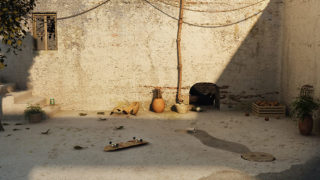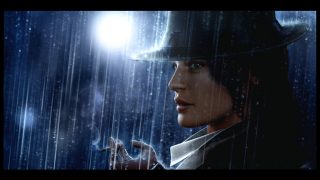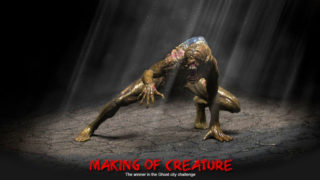
Making of The Patient
The following article isn’t intended to be a tutorial as such but rather a focused ‘making of’ during which I will attempt to explain a lot of my working practices and techniques.
Article: James BusbyIntroductionThe following article isn’t intended to be a tutorial as such but rather a focused ‘making of’ during which I will attempt to explain a lot of my working practices and techniques. I’m going to illustrate this with Videos and images where appropriate. I’ve also included at the bottom of the article a link to the scene file, which includes a version of the scene with a frozen mesh and all the textures in JPG format at full resolution. I have no intention of discussing modeling or sculpting techniques, as there are already thousands of head modeling tutorials out there and I really don’t think there is anything I can tell you that you wont find better demonstrated elsewhere. Instead I want to focus on the Texturing, Shading, Lighting, Rendering and grading of this image. Projection MappingThere are various ways to texture a face, a lot of people tend to use 3d paint programs such as Zbrush or Body Paint, some artists still prefer to paint straight onto the unwrapped UV layout, however I prefer to use a Projection mapping / texture-baking technique. The process involves camera projecting a reference photograph straight onto the mesh and then baking the result out to the UV map, this allows me to create a distortion free base from which I can produce my colour, spec and bump maps. Setting up projection sceneSetting up the scene is a fairly simple process, for this project I used two cameras, one for the front and one for the side. When setting up the cameras I always try to use the longest lens possible, this helps to flatten out the features of the face and reduces texture distortion due to perspective See Images and video Below |
|
 |
 |
|
Above Left Lightwave camera layout and settings Above Right Flash video detailing the processes involved in setting up the scene
Above: an example of what the front and side renders should look like |
|
Post Processing / GradeOK so using the above lighting rig and render settings I rendered out the final image which looked something like this
As you can see it bears very little resemblance to the final image its going to take a lot of post work to get it there, clicking on the image below will show you an animation of the various different layers used in photoshop and Digital fusion in order to achieve the final image. |
|
 |
 |
|
Above left: Layers Video. Above Right: Photoshop layers Levels / curvesI always use lots of adjustment layers, for this image I really wanted to add a lot of contrast so I used an ‘S’ curve and crushed the backs using the levels. HairI did debate using Sasquatch for the hair however this image was only ever intended as an illustration and therefore I thought it would be a waste of time fiddling with hair setting and dynamics when I could easily paint it on in photoshop. Depth of field effectYou might notice that in the render above his ears are out of focus, I actually created this effect very simply by using the blur tool in PhotoShop. Rendering DOF in LW can significantly increase the render time Chromatic Aberrationchromatic aberration is caused by a lens having a different refractive index for different wavelengths of light. It creates a rainbow coloured fringe where the light splits into its component colours. I really like the effect as it adds an armature photographic quality to the image. you can see its effects in the image below I’ve exaggerated it quite a lot in this image. I created this effect in Fusion using the Speed six Monsters Plugin ‘Gun’
GrainThe grain was created very simply by creating a new layer in photoshop and applying some nice and setting the adjustment to ‘Colour Burn’. BackgroundBecause I rendered the character out as a 32bit TGA I was able to use the alpha map to cut him out and insert a background behind. I used an image of a hospital emergency room and blurred it in Photoshop very simple stuff really. FusionThe final step of the grading process took place in fusion using the ‘Speed 6 Monsters, Film effects’ plugin which gives you the option to choose from various different film stocks, I chose to under expose this image slightly, hence the greenish tint. you can see the effects in the image below
|
|
|
And that’s about it really, I hope this was of some use to you and if you have any questions feel free e-mail me jamie@ten24.info You can download the entire scene complete with all the maps and models from the link below. Don’t forget to check out the ten24 website Related linksArtist Profile: http://ten24.3dm3.com/ |
|
































